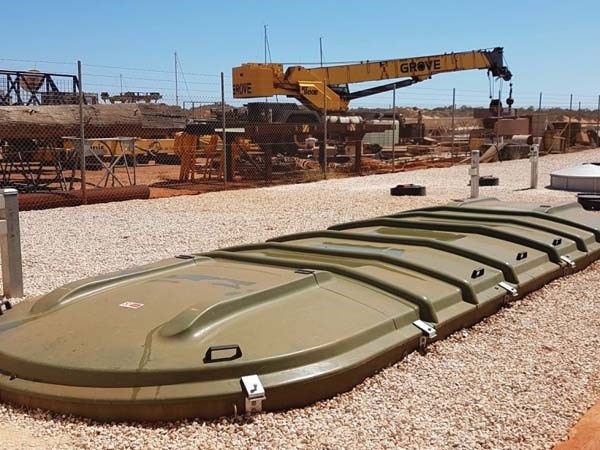Kingspan Launches New BioDisc Sewage Treatment Plant
Published on by Water Network Research, Official research team of The Water Network in Technology
Kingspan Water announces the introduction of the world-leading BioDisc sewage treatment plant range in the Australian market.

Available for local commercial projects, the new BioDisc plant range underlines Kingspan Water’s commitment to deliver fully compliant ways to effectively treat, pump and separate wastewater.
With the release of the BioDisc, Kingspan can now offer the Australian market one of the largest and most technologically advanced wastewater treatment ranges available globally.
Strict environmental standards and building control regulations place a greater responsibility on end users to ensure the correct sewage treatment plant is chosen for their wastewater projects.
The Kingspan BioDisc BD-BM sewage treatment plant range exceeds these standards having gained accreditations worldwide with Kingspan’s BioDisc BL model, as well as achieving AS 1170.0:2002 – Structural Design Actions and AS 1170.4:2007 – Earthquake Actions.
Key features of the Kingspan BioDisc BD-BM sewage treatment plant range include lowest odour emission levels on the market; tested and fully approved in accordance with BS EN13725; lowest operating and maintenance costs in its class; unique rotating biological contactor technology with patented managed flow design to ensure optimum treatment efficiency at all times; noise-free operation; fully removable lid for easy maintenance and desludging; minimal requirement for service and maintenance; advanced control panel options available with telemetry monitoring for total peace of mind; single piece tank design reducing time on site for system installation; and plug-and-play system with all system functions pre-set from the factory.
Tested and suitable for applications of up to 225 population equivalent, the BioDisc BD-BM range is ideal for installation in hospitality, leisure, government, transport and domestic housing developments.
The BioDisc commercial range has been successfully supplied for projects covering all continents, including Afghanistan (British army), Perth (mining sector), and the Middle Eastern regions of Oman and UAE to name a few, along with several installations across European markets.
Read more: Architecture and Design
Media
Taxonomy
- Sewage Treatment
- Produced Water Treatment
- Water Treatment & Control
- Waste Water Treatments
- Technology
- Business Strategy
- Sewage
- Water Management
- water treatment
1 Comment
-
I understand this is a small clip of an article on this product. As in all devices there will be the cost and reliability to be concerned about. Not mentioned was the ancient practice of using chlorine in the process. Hopefully not. The odor mentioned was reduced not eliminated. This sort of puts modern technology out of the equation. One simple question which is now a standard in all waste treatment facilities. Is the recycled water potable and no longer dumped into rivers to the ocean? The elimination of all pathogens and chelating toxins to their non toxic nutritional form is now mainstream. I am sure you have most if not all of these modern features in your product/process. Again just a short article.
1 Comment reply
-
Guy McGowen - Simply put the quality of the final effluent will be governed by local environmental factors, the environmental regulatory in that area and/or the end user. Certainly in Scotland the use of chlorine to disinfect is not allowed, but in other areas of the world it is still a standard practice. As for producing potable water standard, this will be determined by the end user. In the vast majority of cases it will be an industrial end user. One problem of using this as potable water is the apprehension of users to drink water that has originated from a sewage treatment plant, irrespective of it meeting potable water standards.
In general providing potable water from the back end of wastewater plants is unusual in the vast majority of plants around the world. Whilst this may sound like the best re-use of the effluent, (particularly where water scarcity is a problem) the cost of treating to this standard (at every plant) is extremely prohibitive. The only routine place I can think this happens (on a large scale) is the NEW Water produced in Singapore. As with ending "dumping" in rivers and oceans, the local regulatory will detail a standard to ensure the minimal environmental impact as determined by the local receiving water course.
What modern technology will deliver is better ways of treating wastewater in a more efficient manner and at a reduced impact, be it in lower energy, less sludge or less maintenance. This is certainly the focus at Wastewater Wizard Ltd., where our passive vermifiltration technology treats wastewater to a high standard, produces no sludge and requires only basic maintenance.
-